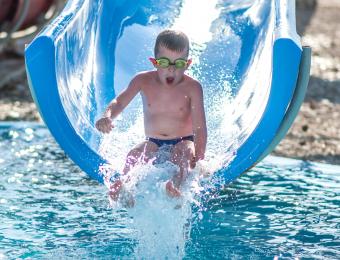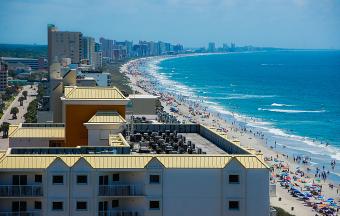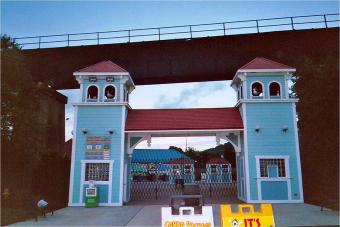
Roller coaster accidents are not common at amusement and theme parks, but they can be devastating when severe accidents cause injuries or fatalities. Understanding the different types of accidents is the first step for riders ensuring that their next theme park getaway is a safe one.
Types of Ride Accidents
There are several causes of coaster accidents that can affect a ride's performance and safety.
Mechanical Problems
All amusement park rides, including roller coasters, are complex machines that can easily have mechanical problems. Incidents such as broken parts, computer errors, and malfunctioning brakes can cause different types of accidents that may lead to either minor or major injuries. Fortunately, parks have many safeguards in place to minimize the risk of mechanical problems, including:
- Redundant safety systems for all critical ride mechanics
- Fail safe ride designs, such as brakes that automatically close when the ride loses power
- Regular safety checks for all mechanical systems, including daily test rides
Structural Problems
As roller coasters age, they can develop structural problems from the climate, weather, and long term use. This can lead to loose struts and beams, loosened bolts, and worn out parts that may break, crack, or fall off during operation even if there are no mechanical errors or other problems. The safety measures in place to minimize these risks include:
- Regular maintenance inspections, often daily
- Operators trained to listen and observe the ride for any sign of structural difficulty
- Redundant construction that uses extra equipment in case of structural wear
- Regular replacement of parts based on operational logs, even if no immediate safety concerns are apparent
Operator Error
Even with the most sophisticated control systems and safety guards, it is possible that accidents can be caused by human error on the part of the ride's operators. Individuals who operate a coaster's controls may accidentally unlock harnesses or fail to check each safety restraint, dispatch a train prematurely before riders are properly seated, or engage emergency brakes when not needed. The safety systems in place to prevent these types of accident-causing errors include:
- Computer lockouts to prevent inadvertent commands
- Extensive training and testing for operators
- Multiple operators to double check safety procedures
Rider Error
There are times when a rider can cause an accident because they are not riding the coaster safely. Riders who fail to follow operator instructions and park guidelines may injure themselves and other riders, and they could be subject to legal prosecution. Fortunately, there are safety mechanisms in place to catch any misbehaving riders and to keep everyone save, such as:
- Safety fences and barriers around restricted areas
- Multiple ride safety restraints that adjust to fit each rider
- Posted warnings and safety guidelines for each ride

Examples of Roller Coaster Accidents
Despite the best precautions and most rigorous safety checks, ride and coaster accidents do still happen, though severe accidents that cause injuries are very infrequent. Examples of accidents in the past few years include:
Mechanical Error:
- May 16, 2008: The Wildcat roller coaster at Cedar Point amusement park failed to crest one hill, rolled back, and struck a second coaster car. Nine guests received minor injuries.
- July 29, 2005: The California Screamin' roller coaster at Disney's California Adventure rolled through loose brakes and collided in the loading zone, causing minor injuries to 15 riders.
Structural Error:
- May 5, 2007: A stand up roller coaster at Expoland in Osaka, Japan derailed one car, killing one woman and causing 18 additional injuries.
- May 21, 2006: A roller coaster at Valleyfair in Minnesota derailed, causing minor injuries to 14 riders.
- July 14, 2004: The steel cable on Top Thrill Dragster at Cedar Point frayed and metal fragments caused minor cuts and injuries to riders.
Operator Error:
- May 1, 2004: A guest was improperly secured in the Superman: Ride of Steel roller coaster at Six Flags New England and was killed after being ejected from the ride.
Rider Error:
- June 28, 2008: A teen climbed two barrier fences at Six Flags Over Georgia to retrieve a hat beneath an inverted roller coaster. He was struck by the coaster and killed.
- February 25, 2006: A 13-year-old boy stood up on a dare on a roller coaster at Cypress Gardens theme park and was thrown from the ride. He suffered severe injuries.
Riding Roller Coasters Safely
To minimize the risk of accidents or injuries while riding roller coasters, park guests should follow common sense roller coaster safety tips.
- Always follow operator instructions and pay attention to posted safety guidelines.
- Do not attempt to bypass safety requirements such as minimum heights or restraint use.
- Secure all safety restraints snugly and in the proper position.
- Do not ride a coaster if you cannot be seated properly in the ride unit.
Roller coaster accidents can be tragic, but they are also rare. Amusement parks have many different safety precautions in place to minimize the danger of different types of roller coaster accidents, and safe riders can easily enjoy their favorite rides without worry.







